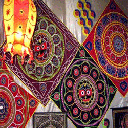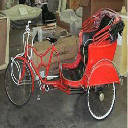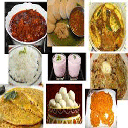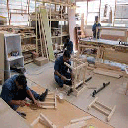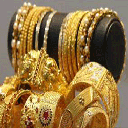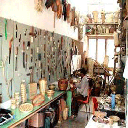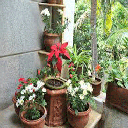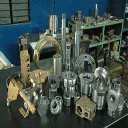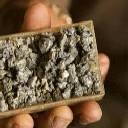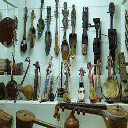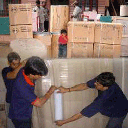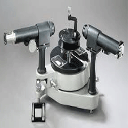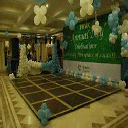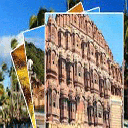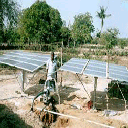Orissa, located in the eastern coast of India is a state with immense potential in natural resources. It is located between 17.49'N and 22.34'N latitudes and between 81.27'E and 87.29'E longitudes. The state is touched by the Bay of Bengal on the east; Madhya Pradesh on the west and Andhra Pradesh on the south. It has a coast line of about 500 kms. It spreads over an area of 155,707 square kms. Orissa, owing to its proximity towards the sea experience a typical tropical climate which is characterized by very hot climate during summer and maximum rainfall during monsoon season. The winter season is ideal for visitors and tourists. There are three main seasons experienced in Orissa – summer, monsoon and winter. The summer season starts from March to June, Rainy season from July to September and winter season from October to February. However, locally there are six seasons: Grishma, Varsha, Sharata, Hemanta, Sisira, Vasanta. Every season has its own charm. Rainy season starts from mid June and lasts till October. Monsoon rains have very much importance for crop production. But excessive rains create flood and damage crops and houses. The coastal areas of the state experience cyclone and tornado during monsoon season. The cyclonic storms originate in the Bay of Bengal often cross the east coast between Paradeep and Chandbali. Orissa can be visited round the year. However, the best season is the winter from September to March. Tourists visiting to Orissa are advised to bring light weight cotton clothing which is ideal for hot and humid summer as well as rainy seasons. Where as Warm clothings like jackets, sweaters and coats can take care of the warm winters. Rivers:There are four groups of rivers flowing through Orissa into the Bay of Bengal. These are:Rivers having source outside the state – the Subarnarekha, the Brahmani and the Mahanadi Rivers having source inside the state – the Budhabalanga, the Baitarini, the Salandi, and the Rushikulya Rivers having source inside the state but flow through other states – Bahudu, the Vansadhara, and the Nagavali Rivers having a source inside Orissa, but tributary to rivers which flow through other states – the Machkund, the Sileru, the Kolab, and the Indravati. Apart from these important rivers, there are so many small rivers flowing through the state. The two lakes i.e. Chilka and Ansupa and several waterfalls are sources of attractions for numerous visitors. Wildlife:Orissa covers a total forest area of 58,136.23 Sq. Kms. These un-spoilt natural landscapes offer natural habitat to the state’s incredible wildlife. There are many wildlife sanctuaries in Orissa. The Similipal Tiger Reserve is a vast expanse of lush green forest with waterfalls, inhabited by tigers, elephants, and other wildlife. The Bhitarkanika Wildlife Sanctuary has been protecting estuarine crocodiles since 1975. Minerals:The State of Orissa is endowed with vast mineral deposits like coal, iron-ore, manganese-ore, bauxite, chromites, Chromite 183, Chinaclay 311, Dolomite,Fireclay, Graphite etc. According to All India Mineral Resources Estimates, the mineral deposits of Orissa in respect of chromites, nickel, cobalt, bauxite, and iron-ore were about 98.4%, 95.1%, 77.5%, 52.7% and 33.4% respectively of the total deposits of India. The total deposit of minerals is given below.
Asurgarh Fort - Narla, Kalahandi:This fort is situated near Narla about 35 km from Bhawanipatna in Kalahandi. Asurgarh served as an advanced civilization around 300 BC to 500 AD. and was the capital of Vyaghraraja of Mahakantara around 4th century AD. It was the capital of Kantara through which trade and commerce between Kalinga, Kantara, and Soouth Kosal were made. The Asurgarh Fort is almost rectangular in shape having four gates piercing the surrounding mammoth wall that is made of brick, rubble and earth. After the wall, a wide and deep moat girdles the fort on three sides respectively on the north, south and east. The fort area measures 24.29 hectares of land. On the west of the fort, the river Sandol flows close to the western rampat towards north to meet the river Utei, a tributary of the Tel, at a distance of about 3 km from the fort site. Close to the eastern ditch, the builders of the fort excavated a huge water reservoir measuring 200 acres of land. It is popularly known as Asursagar. It has been pointed out that the water of the reservoir could be trained into the ditch of the fort through two sluices gate. On the southwest corner of the fort, another small tank was dug, which is known today by its name Radhasagar. Habitation zone of the peoples is being documented towards the south and north of the fort immediately after the fortified wall. Lowe town or habitation area is further superimposed by another mud wall within 100 hectares radius at each settlement zone, the mud wall has single gate in the middle. Archaeological Museum (Puri):One can also visit the Archaeological Museum, which is just exterior the Sun Temple to witness many sculptures and carvings found throughout the temple excavations. It is an archaeological museum established in 1968. It essentially displays the objects related to Konark like loose sculptures from the Sun temple complex representing the art and architectural style, religious, social and economic life of the citizens of Orissa during the 13th century Ranipur-Jharial:is an important archeological site situated in Balangir district of Odisha.is situated at a distance of 104 km from Balangir town and 35 km from Titilagarh town. The site consists of the twin villages of Ranipur and Jharial. It has been mentioned as Soma Tirtha in scriptures, the place combined a cross section of religious faiths like Saivism, Buddhism, Vaisnivism and Tantrism. In the past, queens used to live at Ranipur and Jharial was a fort. It is said that there were at least 200 temples covering an area of about half a mile in length and a quarter of a mile in width. The largest stone temple is 'Someswar Siva', which stands on the banks of the river. It was constructed by a famous Mattamayura Shaivacharya Gagana Siva whose inscription can be found on the lintel of the temple. The Hypaethral Temple:The temple of 64 yoginis of Ranipur-Jharial is famous not only for its beautiful architecture but also for its religious significance. Three-faced Shiva stands at the centre of the temple encircled by 64 images of the yogini goddesses in various positions . Unfortunately, out of 64 yoginis, many are missing at present. The cult of yogini worship in Odisha began in the 9th century. Shivaratri mela is also celebrated in Ranipur-Jharial each year where devotees from far off places come. The remarkable 20 m high Indralath Temple of this place is said to be the highest brick temple of ancient India. Sources of information: The Yogini Temples of India, In the pursuit of a mystery, Stella Dupuis, Pilgrims Publishing, Varanasi-2008 Yogini Cult and temples, A Tantric Tradition, Vidya Deheja, National Museum, New Delhi- 1986 The existing temples are five and the three-faced Shiva image is NOT embracing Parvati. Inchudi:Inchudi is a village situated 19 km from Balasore town. It is famous for the historic Salt Satyagraha of 1930.It is said that after Dandi (where Mahatma Gandhi himself led the movement), the mass civil disobedience against Salt Laws was most successful in this village. The participation of several women in the Inchudi campaign was regarded by the then Congress High Command as the highlight of the movement. District Museum (Balangir):It is situated at District Library, Khandaipada. It show Stone sculptures, metal images, metal objects, jewellery, terracotta, miniature paintings, oil paintings, anthropological objects, and others. Pottery, glass objects, wooden objects, textiles, manuscripts, ivory & bone objects are also displayed. Lalitgiri:Orissa, is the earliest Buddhist complex in Orissa built on a sandstone hill. It is a popular tourist destination and pilgrimage site for its enormous brick monasteries, the ruined Chaitya Hall, stone stupas and the museum that is home to statues of Buddha, scrolls and other Buddhist relics. The majestic ruins of the huge brick monastery, the remains of the chaitya hall, a number of votive stupas and a renovated stone stupa at the apex of a small rugged sandstone hill dominate the rural greenery around. In addition, the museum displays a huge number of Mahayana sculptures consisting of colossal Buddha figures, huge Boddhisattva statues, statues of Tara, Jambhala and others. Interestingly, most of these sculptures contain short inscriptions on them. The Standing Buddha figures, with knee length draperies over the shoulders remind one of the influences of the Gandhara and Mathura school of art. This also carries to mind the fact of Prajna, who had come from Takshasila to ancient Orissa to learn the philosophy of Yoga. He later left for China in the eigth century A.D. with an autographed manuscript of the Buddhist text Gandavyuha, from the then Orissan king Sivakara Deva 1, to the Chinese Emperor Te-tsong. Lalitgiri, Lalitgiri travel, Lalitgiri tourism, Lalitgiri Historical Place, travel to LalitgiriThe discovery of caskets containing sacred relics, probably of the Tathagata himself, from the stone stupa at the top of the hill, further enhances the sacredness of the stupa as well as of Lalitgiri for Buddhists around the world. It also brings to mind the description of Hiuen T'sang, the famed Chinese traveller of the seventh century A D, about the magnificent stupa on top of a hill at Puspagiri Mahavihara which emitted a brilliant light because of its sacredness. " On the basis of archaeological materials including inscriptions brought to light by excavation, Langudi hill in Jajpur district may be identified as Puspagiri." Kaliakata is a small village in Chhendipada, situated north-west of Angul town. Kaliakata has pre-historic sites that were discovered by Valentine Ball in 1876.A recent investigation has revealed that the sites are very important for study of pre-historic antiquities. Kuchai is a pre-historic site situated at a distance of 8 km north of Baripada.Excavations at Kuchai yielded yielded some Neolithic possessions of man. Potteries found here indicate the development of Microlithic culture of the late Stone Age in this area. Several palaeolithic artifices have been found at Kuliana, which situated at a distance of 18 km from Baripada. Gudahandi Gudahandi hills are situated near the Khaligarh village, at a distance of 7 km from Ampani hills in Kalahandi. A row of caves is situated at the foot of these hills. These caves bear pre-historic pictographic paintings.Pictographic paintings in red and black colours appear at the entrances of some of the caves. Even though these paintings are yet to be studied thoroughly, it is widely believed that they belong to the period of Indus Valley Civilisation. All the three hills taken together have the appearance of a pot with a lid on it.The name Gudahandi, meaning a pot with molasses, may have originated from this. Simlikhol:Simlikhol is situated 60 km from Padmapur in Bargarh district. The site has a 13 feet (4.0 m) high cave that consists of pre-historic rock paintings and other things of palaeontological interest The cave was probably a natural rock shelter for the primitive man. During British Raj, the cave was used as a shelter by many freedom fighters evading arrest or detention. During Dussehra, a festival is observed at a Durga temple located besides the cave. Ushakothi, situated 20 km from Sambalpur, is a rock-cut cave situated at the foot hill of Maheswar hill, in the midst of deep forests. It measures 150 feet (46 m) in height and more than 200 feet (61 m) in width. This cave contains yet to be deciphered primitive paintings. Yogimath, situated 124 km from Bhawanipatna, is notable neolithic cave paintings. The unique brick temple of Pataleswar at Budhikomna is situated at a distance of 40–50 km from Yogimath. Tribal Museum (Koraput):It is a Multipurpose Museum which was established in 1976. It consists of Stone sculptures, metal images, metal objects, jewellery, terracotta, wooden and tribal worship, Objects, textiles, anthropological objects, a small zoo, open air display. There are three museums The Orissa State Museum. The Handicrafts Museum and the Tribal Research Museum which have a wealthy set of sculptures, coins, copperplates, armory objects, rare palm leaf manuscripts, litchi and Bronze Age implements, paintings, traditional folk and music instruments and similar objects. The art lover would love to trip these museums. Caves of Udayagiri:also known as Rani Gumpha has beautiful images of elephants, monkeys, sword fights and abduction of women etc. All the images have the connection with King Kharvela. The images with rich artistic expressions, is a great attraction for history lovers. Some of the caves are completely in ruins, while cave 3 and 4 are known for its massive sculptures and architectural splendor. Handicrafts Museum (Bhubaneswar):Handicrafts Museum, Handicrafts Museum travel, Handicrafts Museum tourism, Handicrafts Museum Historical Place, travelA large set of Orissan handicrafts, among them stone statue, patta paintings, brass castings, horn toys and silver filigree are worth seing. Open 1000-1700 excluding Sunday. The Orissa state museum:It houses a rich collection of sculptures, coins, copper plates, stone inscriptions, lithic and bronze age tools, rare manuscripts written on palm leaves, traditional and folk musical instruments. Rare epigraphic records are preserved in the Epigraphy Gallery. A visit to the museum provides an instant overview of Orissa as it was and of course still is. The Handicrafts Museum has a splendid collection of stone sculptures, patta paintings, brass castings, horn toys and Orissa's famous silver filigree work. The Tribal Museum provides an insight into the tribal culture of Orissa. The manuscript gallery here is significant as it contains some rare palm leaf manuscripts. The 50,000 manuscripts, some of which are beautifully illustrated, cover subjects as diverse as religion, philosophy, astronomy,astrology, poetry, science, medicine, mathematics, warfare and the crafts. The oldest manuscript dates to the 15th century though evidence reveals that this art existed as far back as the 6th century AD. Palm leaves were dried and the Oriya script was incised into the leaf with a stylus.The manuscripts are incredibly rich in exquisite penmanship and are a repository of artistic expressions of that time. The costumes, jewellery, hairstyle and facial features are very similar to the Orissa temple sculpture. The scenery depicted is highly stylised and symbolic. The earliest palm leaf manuscript i the Abhinava Gita Govinda b-Chandra Das Dibakar Mishra by Sridhar Sharma, dated 1496. A 1690 illustrated manuscript of Gita Govinda written by the 12th century poetjayadeva has 80 folios It displays the advanced writing technology of its time in its drawings on both sides of palm leaves, in rich primary colours undiminished bv time. Dhauli:Orissa, is famous for its Buddhist Monuments. It also happens to be the place where the bloodiest of battles was fought and won by Emperor Ashok. It is also the moment that marked his transformation from an ambitious king of a prospering kingdom to a follower of Buddha and his teaching. The evidence of this transformation can be seen at Dhauli, 8 km from Bhubaneswar, in form of a rock edict marked by the image of an elephant sculpted from the overhanging rock. There are two such rock edicts still surviving in Orissa. The inscriptions are public injunctions where Emperor Ashok asks his administrators and the general public to live peacefully and fall the lessons that Buddhism has to offer. Ratnagiri in the Birupa river valley in the district of Jajpur, is another famous Buddhist centre. The small hill near the village of the same name has rich Buddhist antiquities. A large-scale excavation has unearthed two large monasteries, a big stupa, Buddhist shrines, sculptures, and a large number of votive stupas. This excavation revealed the establishment of this Buddhist centre at least from the time of the Gupta king Narasimha Gupta Baladitya (first half of the sixth century A.D.). Buddhism had developed at this place - unhindered upto the 12th century A.D. In the beginning, this was an important centre of Mahayana form of Buddhism. During the 8th-9th century A.D., this became a great centre of Tantric Buddhism or Vajrayana art and philosophy. Pag Sam Jon Zang, a Tibetan source, indicates that the institution at Ratnagiri played a significant role in the emergence of Kalachakratantra during the 10th century A.D. This is quite evident from the numerous votive stupas with reliefs of divinities of the Vajrayana pantheon. Separate images of these divinities and inscribed stone slabs, and moulded terracotta plaques with dharanis found in the excavation at Ratnagiri. Presently this university of Buddhist learning is found in ruins that attract a number of visitors every year. For lovers of art and architecture, lay tourists as well as special groups, Ratnagiri offers in its magnificent ruins, a large brick monastery with beautiful doorways, cella, sanctum with a colossal Buddha figure, and a large number of Buddhist sculptures. There is a smaller monastery at the place along with a stone temple, brick shrines and a large stupa with numerous smaller stupas around. List of the famous Temples of Orissa: Kakatpur Mangala Temple , Puri Akhandalmani Temple Ananta Vasudeva Temple Baladevjew Temple, Kendrapada town Charchika Temple Jagannath Temple (Puri), Puri Maa Taratarini Temple Hill Shrine, Near Berhampur, Ganjam Jagannath Temple (Koraput), Koraput Sakshigopal temple, Sakshigopal, Puri Lord Hanuman Temple, Siruli, Puri Ramachandi Temple, Konark, Puri Baliharachandi Temple Puri Konark Sun Temple Lingaraj Temple, Bhubaneswar Maa Manikeswari Temple, Bhawanipatna Maa Samaleswari Temple, Sambalpur Mausimaa Temple Mukteswara Temple Kapilash Temple, Dhenkanal Majhi Ghariani Temple, Rayagada Rajarani Temple, Bhubaneswar Tarini Temple, Biribati, Cuttack Maa Katak Chandi Temple, Cuttack Bhattarika Temple, Cuttack Saktiswar Temple, Bariniput, Jeypore Sabara Sree Kshetra, Koraput Panchanana Temple, Raju Street, Jeypore Jagat Janani Temple, Jeypore Maa Tarini Temple, Ghatgaon, Keonjhar HariShankar, Balangir Nrusinghanath, Paikmal, Bargarh Ghanteshwari, Chiplima, Bargarh Dhyanakuda Pitha, Hajipur, Jagatsinghpur Sarala Temple, Jhankad, Jagatsinghpur Gorekhnath Temple, Gorekhnath, Jagatsinghpur Patneswari Temple,Patnagarh Nilamadhav Temple, Kantilo, Nayagarh Gupteshwar‎ Temple,Jeypore Maa Tara Tarini Temple , Ganjam Odogaon Raghunath Temple, Nayagarh Ladoo Baba Temple, Sarankul, Nayagarh


